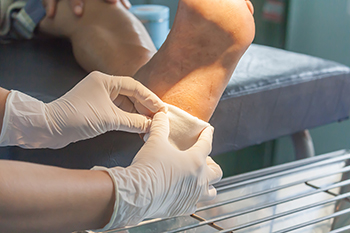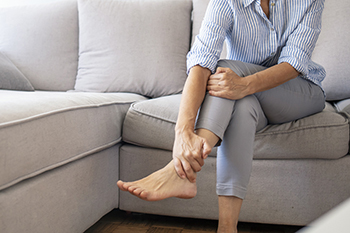
Diabetes is a condition that affects how sugar in the blood is controlled. Those with the condition are at a greater risk of developing wounds on their feet because of nerve and vein damage. These can be painful and take a long time to heal. If left untreated, they can lead to amputation of the foot or leg. Negative pressure wound therapy, or NPWT, is a method where a special dressing is put on the wound, and a machine sucks out any fluid from the wound. This method is used to help wounds heal faster, but it is more expensive than regular wound dressings. Studies on this method have shown that while this is a beneficial treatment, it may not be better than traditional foot wound treatment, and more research is needed. Diabetes is a serious condition, and if you are suffering from this disease and have foot problems, including wounds on your feet, it is strongly suggested that you make an appointment with a podiatrist for an accurate diagnosis and treatment.
Wound care is an important part in dealing with diabetes. If you have diabetes and a foot wound or would like more information about wound care for diabetics, consult with one of our podiatrists from Community Foot Specialists. Our doctors will assess your condition and provide you with quality foot and ankle treatment.
What Is Wound Care?
Wound care is the practice of taking proper care of a wound. This can range from the smallest to the largest of wounds. While everyone can benefit from proper wound care, it is much more important for diabetics. Diabetics often suffer from poor blood circulation which causes wounds to heal much slower than they would in a non-diabetic.
What Is the Importance of Wound Care?
While it may not seem apparent with small ulcers on the foot, for diabetics, any size ulcer can become infected. Diabetics often also suffer from neuropathy, or nerve loss. This means they might not even feel when they have an ulcer on their foot. If the wound becomes severely infected, amputation may be necessary. Therefore, it is of the upmost importance to properly care for any and all foot wounds.
How to Care for Wounds
The best way to care for foot wounds is to prevent them. For diabetics, this means daily inspections of the feet for any signs of abnormalities or ulcers. It is also recommended to see a podiatrist several times a year for a foot inspection. If you do have an ulcer, run the wound under water to clear dirt from the wound; then apply antibiotic ointment to the wound and cover with a bandage. Bandages should be changed daily and keeping pressure off the wound is smart. It is advised to see a podiatrist, who can keep an eye on it.
If you have any questions, please feel free to contact our offices located in Beavercreek, Dayton, and Vandalia, OH . We offer the newest diagnostic and treatment technologies for all your foot care needs.





